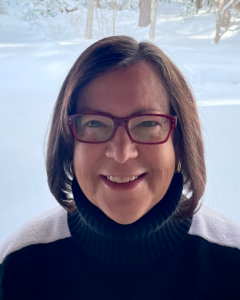Disabled Lives and Pandemic Lives: Stories of Human Precarity
by Carol Rogers-Shaw
I’ve lived all my life in the Northeastern United States, and always looked to March as the end of winter and April as the beginning of spring. But in 2020, it was different. Throughout the cold months of January and February, we began hearing news stories about the devastation triggered by a new and mysterious disease. As the seriousness of the situation became increasingly clear, my husband and I wondered if, as a disabled woman, I needed to take any particular precautions. We decided I should call my doctor.
I am a 62-year-old, White, American woman. I was diagnosed at the age of 20 with Type 1 diabetes, which has resulted in numerous hospitalizations, frequent health crises, and life-threatening events. Type 1 diabetes was classified in 2008 as a disability under the Americans with Disabilities Act Amendments Act. I spent most of my career, from 1989 to 2014, as a public-school teacher of students ages 14 to 18 who had identified disabilities. In 2020, I completed a PhD in Lifelong Learning and Adult Education, during which I focused on the needs of learners with disabilities transitioning to higher education. Much of my life and career has been devoted to the experiences—my own and others’—of living with disability.
That call to my doctor is burned into my memory as our first real moment of pandemic fear, and it was hard not to panic after I hung up. We live in the Adirondack mountains where healthcare is less accessible than in other areas. The doctor told me to head somewhere with top-notch healthcare providers and to stock the house, so I didn’t have to leave it for at least three months. I threw clothes and all my diabetes supplies into the car and raced to the Triangle in North Carolina, where my daughters live. As I drove, I made a mental list of what I needed, including food to meet my dietary restrictions, insulin and pump supplies, syringes and alcohol pads, sensors and meters, blood-testing strips and glucagon, and anti-nausea and anti-diarrhea medicine. I relied on years of experience planning for contingencies that might arise due to my disability. That weekend my daughters and I made my last trip to a store for over a year, and I began a 14-month quarantine.
The COVID-19 pandemic, which is still ongoing more than two years later, has taken a serious toll on everyone. In some instances, experiences are widely shared across communities and people regardless of other differences. In other instances, the differences, including where one lives, one’s economic resources and employment, race, gender, age, and access to medical care and vaccines have meant that in a very real sense, there has not been one pandemic but many pandemics, or rather one pandemic experienced in many different ways.
 Carol Rogers-Shaw, PhD, is an adjunct professor at the University of Dayton. She earned a doctorate in Lifelong Learning and Adult Education from Pennsylvania State University. She is the co-editor of Adult Learning, an international, peer-reviewed, adult education practice-oriented journal. Dr. Rogers-Shaw taught secondary school English for 30 years. Her experiences with learning-disabled adolescents led her to concentrate on work that highlights the strengths of all learners. Dr. Rogers-Shaw’s research focuses on expanding educational inclusion for disabled adults, stigma and disability disclosure, identity development of learners with disabilities, transition to postsecondary education, and Universal Design for Learning.
Carol Rogers-Shaw, PhD, is an adjunct professor at the University of Dayton. She earned a doctorate in Lifelong Learning and Adult Education from Pennsylvania State University. She is the co-editor of Adult Learning, an international, peer-reviewed, adult education practice-oriented journal. Dr. Rogers-Shaw taught secondary school English for 30 years. Her experiences with learning-disabled adolescents led her to concentrate on work that highlights the strengths of all learners. Dr. Rogers-Shaw’s research focuses on expanding educational inclusion for disabled adults, stigma and disability disclosure, identity development of learners with disabilities, transition to postsecondary education, and Universal Design for Learning.